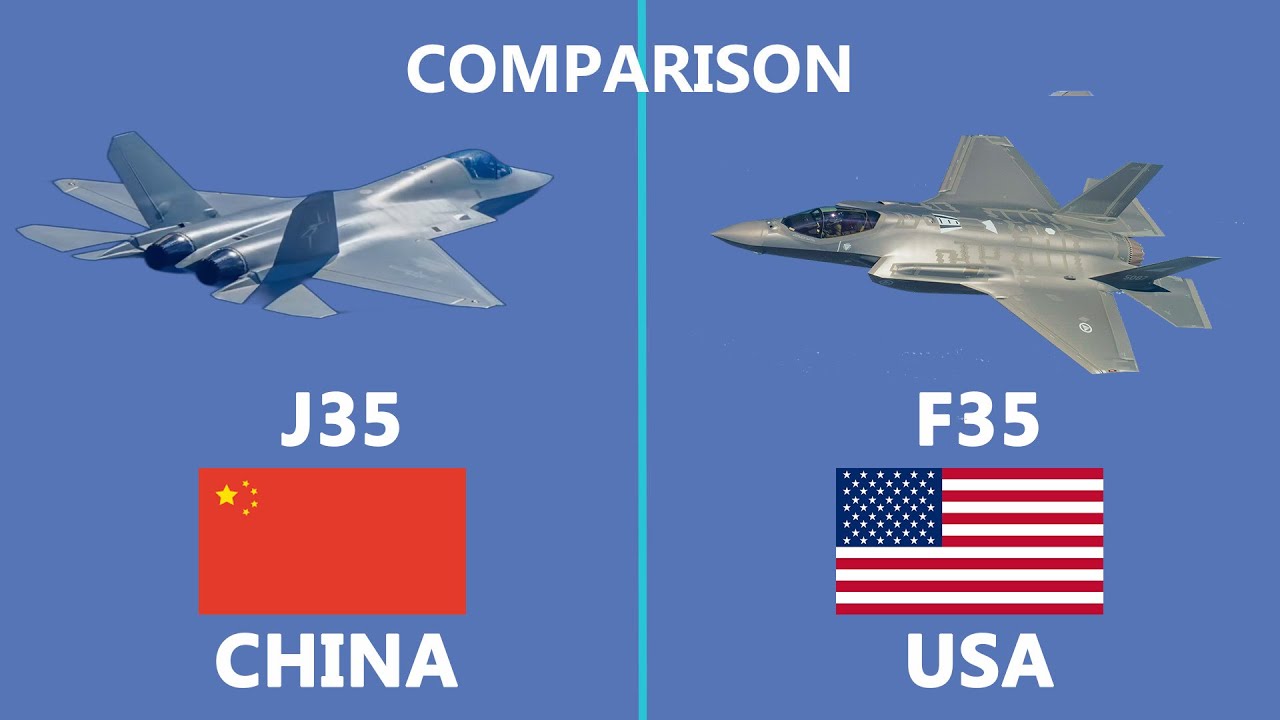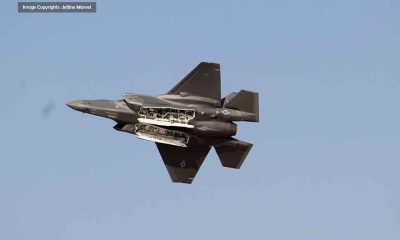Civil Aviation
Comparison of Chinese J35 and American Built F35 5th gen Fighter Jet

The F-35 from the United States and the J-35 from China are two of the most advanced 5th generation fighter jets in the world. Both aircraft represent cutting-edge technology and play crucial roles in their respective countries’ air forces.
Both jets emphasize stealth, speed, and agility, but they have distinct design features, technologies, and roles within their respective air forces. In this comparison, we’ll look at how these two fighters stack up against each other in terms of performance, technology, and capabilities.
Japan Airlines Hit by Cyber Threat, Causes Flight Delays
The F-35A, designed jointly by Lockheed Martin and Northrop Grumman, has a wide range of primary roles. It excels at stealthy, all-weather strike missions, close air support, air superiority, maritime strike, reconnaissance, electronic warfare, and command and control operations. Its estimated price is roughly $80 million, with a flying cost per hour of less than $24,000, and its anticipated procurement is for 2025.
The FC-31 Also known as J-31, or J-35 is a stealthy twin-engine multirole fighter from China, generating significant international interest due to its potential as an export aircraft. With its impressive capabilities, the FC-31 is set to reshape China’s position in the global aerospace market. The aircraft made its maiden flight on October 29, 2021, marking an important milestone in the advancement of China’s aviation technology.
The F-35 and FC-31 (J-35) are both advanced stealthy multirole fighters, but they differ in design, performance, and operational roles. Here’s a comparison based on key specifications:
The F-35 has a maximum takeoff weight of 65,918 lb (29,900 kg), significantly heavier than the FC-31, which has a maximum takeoff weight of 61,729 lb (28,000 kg).
In terms of fuel capacity, the F-35 can carry 18,250 lb (8,278 kg) internally, while the FC-31 carries 15,900 lb (7,200 kg) of fuel.
For propulsion, the F-35 is powered by single Pratt & Whitney F135-PW 100 afterburning turbofan,engines, each producing 28,000 lbf (120 kN) thrust dry,
In contrast, the FC-31 is powered by two Guizhou WS-13E (or WS-21 for the J-35), generating 20,720–20,950 lbf (92.16–93.2 kN) of thrust with afterburners.
Regarding speed, the F-35 has a maximum speed of Mach 1.6 , or 1,296 km/h at seal evel, while the FC-31 can reach Mach 1.8, or 1,400 km/h (870 mph) at sea level.
When it comes to combat range, the F-35 has a combat radius of 770 mi, 1,239 km) slighty lower combat range. while the FC-31 has a combat radius of 780 miles (1,250 km) on internal fuel.
Additionally, the F-35 has a length of 51.4 ft (15.7 m) making it slightly shorter than the FC-31, which measures 56 ft 9 in (17.3 m) in length.
The J-35 is estimated to cost between $70 million and $100 million per unit, while the F-35 carries a price tag of around $80 million to $85 million per aircraft.
The F-35 A design is robust; in contrast to its 8,000-hour design life, its service life has been evaluated to reach 24,000 hours. The F-35A has an extremely low radar cross-section, at 3.8mm, which reduces its radar profile. It can transport a range of US and NATO air-to-air and ground weaponry, with an internal weight capacity of 5,700 pounds in stealth mode and 22,000 pounds in exterior “beast mode,” including a 25mm cannon.
Dead Body Discovered in Landing Gear of United Airlines Plane
while FC-31 employs stealth coatings instead of “baked-in” fiber-mat stealth, a distinctive feature that differentiates it from other stealth fighters. The aircraft is set to eventually incorporate the Guizhou WS-19 turbofan engine, a fundamentally new design with advanced technology similar to the J-20’s engine. The WS-19 engine boasts a maximum thrust of 10 tonnes-force (98.1 kN), promising enhanced performance and efficiency.
The wings of the F-35 feature four external hardpoints, each capable of supporting up to 2,000 pounds (907 kg) of external stores. The aircraft is designed to carry a combination of internal armaments and external payloads, with 2,000 to 2,270 kg (4,400 to 5,000 pounds) of ordnance stored internally to maintain stealth. The total weapons payload capacity of the F-35 is up to 18,000 pounds (8,200 kg), with provisions to carry a mix of external fuel tanks, air-to-air missiles, and precision-guided munitions, depending on mission requirements.
DGCA Slaps Rs 10 Lakh Fine on Akasa Air Over Denied Boarding
while J-35) features a total of six internal hardpoints within its weapons bays, designed to carry a variety of air-to-air and air-to-ground munitions while maintaining its stealth profile. Additionally, the aircraft is equipped with six external hardpoints on its wings, capable of carrying up to 2,000 kilograms (4,400 lb) of external stores.
Multiple software and processor updates have been made to the F-35A. Progress includes improved weapon capability and electronic warfare systems. The current version, known as Block 3F baseline, is moving towards Block 4, with software and weapon improvements planned twice yearly in 2024.



